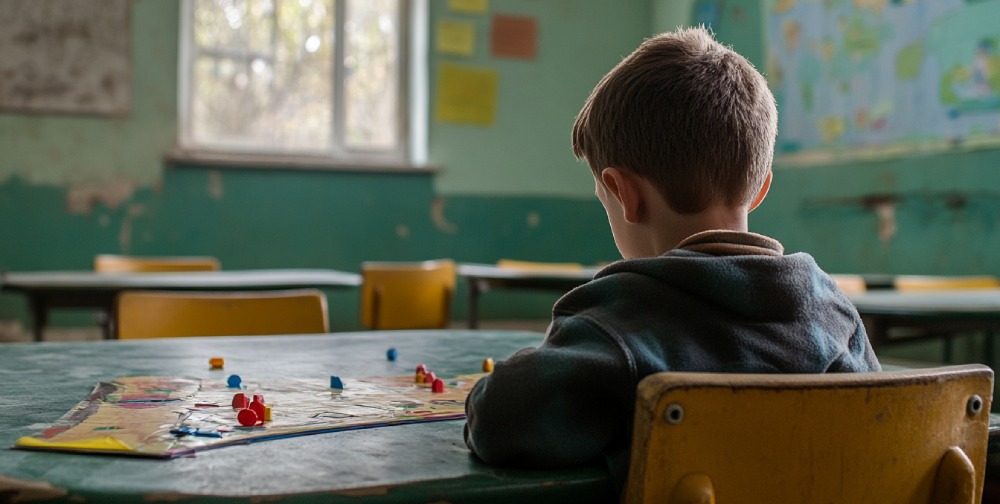Gamification in education is often viewed as a modern phenomenon, brimming with badges, leaderboards, and digital adventures. However, the concept of embedding play and challenge-based elements into learning environments is far from new. From early 20th-century pioneers like Maria Montessori, who emphasized hands-on, self-directed activities, to role-playing simulations used in corporate training for decades, the principle of “learning by doing” has been woven into educational practices across time and cultures.

Maria Montessori
Today, gamification typically conjures images of cutting-edge tech and immersive video games, but its scope extends well beyond screens and pixels. Board games, classroom competitions, collaborative problem-solving quests, and real-world simulations all fall under the umbrella of “gamified” learning. By artfully combining educational objectives with motivational strategies inherent in games—such as points, progress indicators, narrative arcs, and instant feedback—gamification endeavors to transform passive instruction into dynamic, high-engagement experiences.
In this article, we’ll journey through the enduring history of gamification in education, examine its core elements, and explore how contemporary research underscores its effectiveness. Along the way, we’ll integrate fascinating statistics that exemplify just how impactful a well-designed gamified experience can be.
The Longstanding Roots of Gamification
Long before the advent of smartphones, educators recognized the power of play, competition, and structured feedback. Friedrich Froebel, credited with creating the concept of the kindergarten in the 19th century, introduced guided activities and learning through play to spark children’s curiosity. John Dewey, an influential American philosopher and educator of the early 20th century, championed experiential learning—valuing real-world tasks over memorization. While neither necessarily used the term “gamification,” they laid the groundwork for applying game-like strategies to bolster motivation and comprehension.
Over time, these principles have been woven into academic curricula around the globe. Teachers began incorporating simulations, friendly classroom contests, and creative role-playing scenarios to transform students from passive recipients into active, engaged participants. Though many modern digital tools provide visually striking new frontiers for gamification, its underlying methodology—learning through structured, playful challenges—remains as relevant today as it was a century ago.
Core Elements of Gamified Learning
Despite the broad scope of what can be considered “gamified,” there are several guiding principles that bring consistency to the term:
- Objective-Oriented Challenges
Whether it’s a science puzzle or a scenario that recreates historical debates, students progress through challenges designed to meet specific learning objectives. - Rewards and Recognition
Badges, points, progress bars, and titles boost motivation and reinforce achievements. They celebrate progress rather than penalize mistakes, helping students view errors as opportunities to learn. - Immediate Feedback
An essential element of games is the near-instant clarification about one’s actions. This short feedback loop keeps learners informed about their performance and next steps. - Narrative and Immersion
In some gamified environments, students enter a storyline or thematic framework. A well-crafted narrative deepens engagement, tying abstract concepts to imaginative (or real-world) settings. - Collaboration and Competition
Group quests, class-wide challenges, or individual leaderboards can all encourage students to actively participate. Social interaction, whether cooperative or competitive, fosters deeper connection to the material.
The Impact: Research-Backed Benefits of Gamification
1. Boosting Memory and Engagement
Research by the Federation of American Scientists reveals that people retain only about 20% of what they hear and 30% of what they see in a passive setting. However, when they actively perform tasks themselves, retention can jump to 90%. This astounding leap underscores why game-based challenges—where learners solve problems, make decisions, and see immediate consequences—can be so effective.
2. Elevating Motivation and Attendance
A multi-year study on computer science undergraduates (2014–2017) revealed that when course materials were gamified with badges, titles, and leaderboards, attendance soared to 86.25%, compared to 61% in the control group. The same research found homework completion rates spiked to 56.25% in the gamified courses, a 300% increase over non-gamified classes. By rewarding incremental achievements and offering a tangible sense of progress, gamification can inspire greater consistency and responsibility in learners.
3. Improving Performance Through Challenge-Based Learning
In Greece’s School of Electrical and Computer Engineering at the National Technical University of Athens, researchers developed a web-based gamified application named Horses for Courses to teach statistics. Results showed that students exposed to challenge-based gamification improved their performance by 89.45% compared to those receiving traditional lectures. This finding highlights how interactivity, problem-solving, and immediate feedback outpace passive listening.
4. Enhancing Learning for Special Populations
Gamification’s benefits are not restricted to the general student population. The FDA-approved video game EndeavorRx provides a groundbreaking example of how digital games can aid children with ADHD. Over eight weeks of regular 25-minute sessions, 73% of children reported an improvement in their attention. This milestone study shows the potential for tailored game-based solutions to address specific learning or cognitive challenges.
5. Encouraging Engagement in Highly Specialized Fields
Even in rigorous disciplines like medical training, gamification has changed the learning landscape. In one study focusing on obstetric and gynecology, 95% of medical students felt engaged during gamified reviews of core topics, with 74% endorsing it as superior to traditional lectures. This is a notable leap from the 46% engagement rate reported in more conventional educational settings, evidencing gamification’s ability to spark sustained interest—even in advanced or demanding subject areas.
Broad Examples Beyond Video Games
While video games often serve as a prime example, gamification in education transcends screens and controllers. Educators and trainers use:
- Role-Play and Simulations: High school debate clubs simulate court trials; business schools create negotiation simulations. These experiences let students embody real-world roles and apply theoretical knowledge in practical contexts.
- Escape Rooms and Puzzle Missions: Physical or virtual escape rooms integrate puzzles aligned with math, science, or language arts curricula. Students must collaborate and apply course content to “escape,” deepening their mastery in a playful scenario.
- Project-Based Quests: Classrooms transform into expedition teams gathering data for local environmental projects, complete with badges for each phase of research. These quests merge community engagement with game-like progression.
- Board Games and Card Decks: Whether teaching historical events or scientific processes, hands-on tabletop games allow students to manipulate physical components, strategize, and solidify understanding through active problem-solving.
Such approaches ensure that learners of various ages and backgrounds discover multiple entry points into gamified experiences—without necessarily requiring advanced technology.
Designing Effective Gamified Experiences
- Align with Clear Learning Objectives
Every challenge or level should reinforce specific skills or knowledge. Avoid adding “game” layers just for the sake of novelty. - Balance Challenge and Ability
Tasks that are too easy can diminish interest, while overly difficult assignments can frustrate learners. Aim for a “flow state” where challenge meets skill. - Foster Both Individual Growth and Group Dynamics
Provide personal goals (e.g., skill mastery, improvement over time) and collective goals (e.g., team-based quests, class-wide contests) to nurture social engagement and community building. - Use Feedback as a Positive Driver
Formative feedback—offering constructive insights rather than mere scores—encourages continuous refinement, reflection, and enthusiasm. - Consider Accessibility and Inclusivity
Gamified materials should be readily accessible to diverse learners, including those with varying technological access or learning needs. This may involve offering offline options or adjustable difficulty levels.
Conclusion: A Timeless, Evolving Approach
From Montessori classrooms of the early 1900s to sophisticated digital learning platforms of today, gamification in education stands as a testament to the enduring power of play. It merges intrinsic motivation with structured academic goals, helping learners find joy in the pursuit of knowledge. Far from a fleeting trend, gamification represents a centuries-old approach reimagined through contemporary research and technology.
What makes it truly remarkable is its adaptability: whether you’re designing hands-on board game sessions, immersive digital quests, or real-life role-playing scenarios, the core idea remains the same—unlocking deeper levels of engagement, motivation, and mastery. For educators seeking to transform passive lectures into active adventures, and for students eager to level up their learning, gamification offers a pathway grounded in both historical wisdom and cutting-edge innovation.
Embrace this approach responsibly—center it on well-defined learning objectives, inclusive access, and meaningful feedback—and you’ll tap into a powerful catalyst for student growth, retention, and success. After all, the game of learning is one we play our entire lives, and the more engaging it is, the richer our educational journey becomes.





